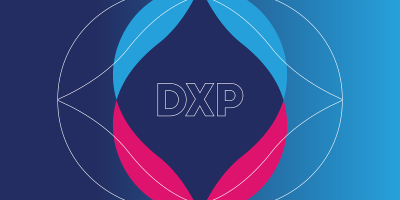Making Personalization at Scale a Reality

The benefits of personalized customer experiences have been expounded upon for years. Research shows that consumers not only tolerate personalization these days, they actually prefer it. In fact, 69% of consumers say they’re more likely to purchase from a brand that delivers a personalized experience, according to a Deloitte study.
But despite this, marketers are finding it ever-so-challenging to deliver on personalization. They know personalization is valuable and they want to do it – but the frustration is in getting it right. If you’re a marketer who feels like you’re failing at personalization at scale, you aren’t alone. Gartner reports that 63% of digital marketing leaders struggle with delivering personalized experiences. Why is that? Because it’s no simple feat to deliver the right content at the right time across the right channels to the right individual. And when you realize you have to repeat this across your entire customer and prospect base, personalization ends up seeming like an impossible challenge.
But rest easy and read on as we dive into some of the common barriers marketers face in achieving their personalization dreams and point you in the direction of solutions that can ease your burdens.
Common challenges of personalization
Creating and maintaining personalized experiences requires time and resources. It doesn’t happen overnight. Before they can even begin to personalize anything, marketers are often spinning their wheels trying to manually sort out challenges, including:
- Data integration: It is time-consuming and complex to bring together customer data from disparate systems across your organization.
- Audience segmentation: Once you have the customer data collected, you need to analyze it and build out accurate customer segments based on their preferences and behaviors.
- Data strategy: You’ll need to be able to answer questions like: Do we have enough data to create a campaign? Do we understand our audience? Can we measure impact?
- Content strategy: Providing personalized experiences requires content that is structured and tagged appropriately so it can be pulled into campaigns that target the right message to the right audience at the right time.
- Optimization: Personalization requires a continuous process of testing and optimizing customer segments, meaning it can be time-intensive and costly.
- Expertise: Building and maintaining customer experiences requires cross-functional skills and multiple teams working together. Many organizations underestimate the demand required.
The key challenge is deciding what data you need to drive a personalized customer experience.
Typically, the rush to integrate too much data adds complexity and you lose sight of your goal. Too little data or the wrong data and you get nowhere. Most importantly, you need to be able to quickly demonstrate tangible business outcomes, such as growing customer lifetime value (CLTV) or reducing operational marketing spend.
How to succeed at personalization
Luckily, there is a solution available to help organizations overcome these personalization hurdles, and the good news is that it features tools that many marketers are already familiar with. A typical martech stack likely includes a content management system (CMS), customer data platform (CDP), digital asset management (DAM) system, and personalization engine. When these solutions are brought together, you can elevate personalization to the next level. Here’s how.
A DAM system makes content readily deployable across multiple channels and experiences. DAM assets are rich in metadata, which, when leveraged correctly, can be used to aid with personalization. When your content is centralized, organized, and accessible, it is that much easier to make sure you’re delivering the ideal asset to create the most relevant experience for your audience.
A CMS is your library of assembled brand content. Each landing page, article, blog, or product page is a rich source of curated content. Put simply, each page tells a story. Using the content already present in your CMS is a reliable source of data to identify consumer interest.
The CDP unifies data from various sources to create a single, trustworthy view of the customer. By applying artificial intelligence or machine learning, the CDP builds understanding of millions of individuals’ desires, needs, and preferences, making personalization at scale possible.
A personalization engine collects information about what visitors are doing on your website in real time. Collect enough of this behavioral data, and you’ll have insights available to create segmentations and then suggest the best next step.
In short, customer data from the CDP and digital content from a DAM system help drive the personalization engine that’s integrated with your CMS, thereby ensuring you can deliver the right content to the right audience based on the individual’s behaviors and preferences.
Benefits of an integrated solution
Leveraging machine learning insights from customer data as well as metadata from the actual digital assets you use make it possible to build personalized experiences quicker and with fewer resources.
Using a combined solution of a CMS with a CDP, DAM system, and personalization engine will help you:
- Reduce the cost and complexity for data integrations
- Drive personalized experiences using asset metadata
- Reduce operational costs by automating audience segmentation with machine learning
- Increase customer lifetime value (LTV) with machine learning audience activation
- Finally deliver the personalized experiences your customers desire
To read about how a national mortgage lender scaled up its personalization efforts and dive deeper into how these powerful technologies work together to turn your personalization dreams into a reality, check out our e-book: Fast-Track Your Organization’s Ability to Deliver Personalized Experiences. And if you want to see our CMS, CDP, DAM, or personalization solutions in action, request, watch, or click through a demo today.


